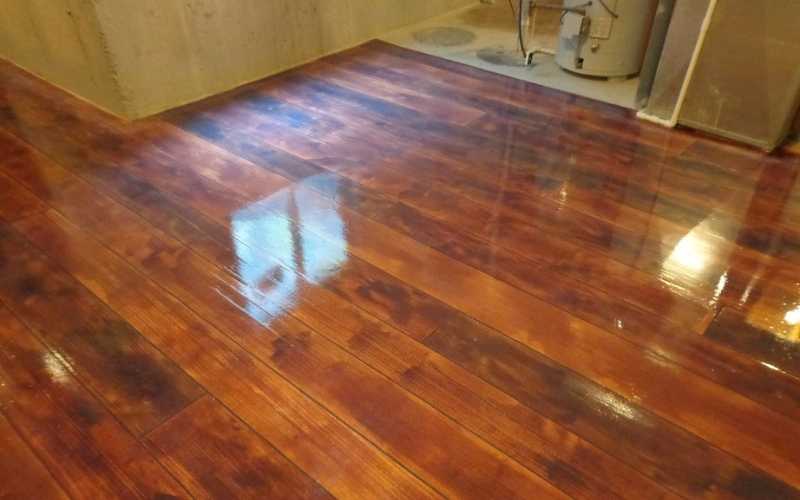Epoxy floor coatings can be applied to basically any surface but can you epoxy wood floors? Would it stick?
Before applying epoxy coating on wood floors, it has to meet certain criteria; the floorboards should be firmly in place with no loose panels, gaps, or buckling and roughly sanded beforehand.
If you want to refinish a wood floor with an epoxy coating because it is not in great condition, you might need to seek other options.
Epoxy coating was designed to be used primarily with concrete. So before applying an epoxy layer over your wood floor, it is recommended you speak with an installer first.
Will Epoxy Stick To Wood?
Table of Contents
Before application, do adequate research to know exactly what epoxy is and how it’ll react with your wood floor.
Pure epoxy usually consists of two different parts, a resin, and a hardener. These two things are mixed together to create an extremely strong adhesive.
Epoxy tends to harden far better than alternative products, making it perfect for applying to any material.
Epoxy is commonly applied over concrete surfaces in areas like the garage but can also be applied on wood.
Read: How to paint tile floors with epoxy
Type of Epoxy Suitable for Use on Wood Flooring
There are different types of epoxy, with countless modifications as well. For wood surfaces, you’ll need tabletop epoxy instead of deep pour epoxy.
Deep pour epoxy is also known as casting resin or river table epoxy; it is thinner, softer, and takes a long time to cure.
The long curing time allows for molding and production but makes deep pour epoxy unsuitable for flooring.
Tabletop epoxy, on the other hand, is specifically designed to be used as a coating layer. For wood surfaces, opt for a brand of tabletop epoxy with a slightly longer curing time.
This gives the epoxy layer a stronger hold and also gives you more time to apply the epoxy. But after application, do not let the epoxy sit too long, or it could be interrupted by foreign particles.
The viscosity of the epoxy should also be put into consideration. The viscosity of liquids basically refers to the thickness; you may need to refer to the epoxy manufacturer’s viscosity rating to determine if it’s the ideal epoxy for wood floors.
Read: Disadvantages of epoxy flooring
How to Apply Epoxy Coating
When you have chosen the right epoxy suitable for your wood flooring, you can begin the application.
First, start by washing and cleaning the wood surface. This removes grease or other substances that may prevent the epoxy from adhering properly to the surface.
If you are applying the epoxy to the entire flooring surface of your home, you will be covering a lot of surface area, and for jobs like this, you’ll need a pressure washer that you can rent or purchase to remove unwanted materials like dirt and mildew.
Next, you will need to sand down the flooring. You can rent or purchase a floor buffer for this. Sanding evens out the flooring and removes any imperfections that can disrupt the epoxy application.
Using a floor buffer to sand the floor also removes finish coatings that should not sit underneath the epoxy.
When the floor is bare and clean, apply a latex primer layer, which improves the adhesion between the epoxy and wood.
For this application, you will need brushes for the edges and rollers for the wide surface areas. A roller cannot be used for the edges as it will not result in even strokes.
Next, stir the epoxy together to begin the hardening process. Thoroughly mix the resin and the hardener or catalyst together; this may take a few minutes. If you want the natural color of your wood to remain visible, you can use transparent epoxy.
If you want your floor to have a glossy finish, you can choose from the multiple levels of gloss available. Opt for a level that suits your personal taste; you can opt for a matte finish as well.
Read: How hard is it to epoxy garage floor
Conclusion
Can you epoxy wood floors, or are you about to ruin your wood floor? Epoxy is commonly applied over concrete floors, and most people wouldn’t want to risk ruining their wood with epoxy.
The good news is you can epoxy wood floor, but there are certain steps to follow, all of which are broken down in this article.

